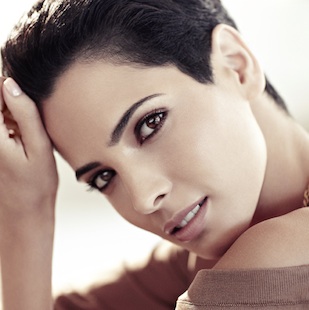By: Hyacinth Mascarenhas
From Cindy Crawford to Gisele Bundchen, some of the most accomplished international supermodels started with Elite Model Look, a renowned annual modeling competition. Offering aspiring models from all over the world the opportunity to join the industry through one of the world’s most prestigious agencies, the competition is now taking its first step towards the ramps of the Middle East.
UAE-based talent agency, FLC Models, will collaborate with Lutece Holding/Elite Middle East to bring the competition to the malls of UAE and Qatar for both men and women. While the male participants are restricted to the first leg of the competition, the women will compete for the chance to represent their country in the World Final in China and secure a 3 year contract with the agency.
“This competition has offered many young girls a chance to be discovered and literally take the fashion world by storm,” said Adriana Usvat, the managing partner of FLC Models in a Gulf News article. “And it is now coming to the UAE and Qatar offering young girls here a platform to showcase not only their beauty but also their personality and talents.”
According to the article, the agency also promised to reflect the culture sensitivities of the region throughout the competition as well.
Open to participants between the ages of 14-22 and at least 172cm tall, the competition is part of a growing trend of aspiring models in the Middle East, a region that is not traditionally a place for supermodels to emerge due to conservative cultural norms.
Many women are now starting to make the revolutionary and bold career choice to enter the fashion industry; a decision has successfully led some to international ramps and changed the way Arab women are perceived by the rest of the world.
Regional pioneers
Born in Nabeul, Tunisia, Hanaa Ben Abdesslem is arguably one of the most successful Arab models to grace the international ramps.
After winning second prize in Mission Fashion, the Lebanese equivalent of Project Runway in the US, Abdesslem was presented to IMG by Sophie Halal who became her manager after the competition.
“I can speak for the people in my country, Tunisia, and there is a lot they don’t know about this industry,” said Abdesslem in a New York Magazine article. “Primarily, they have this misconception of what modeling is about. Modeling can be a career choice, too. I plan to change this misconception within my culture.”
As the spokesperson for cosmetic company Lancôme, Abdesslem has modeled for Chanel, Ralph Lauren, Oscar de la Renta, Givenchy and landed editorials for French, German, Spanish and Italian Vogue.
Bearing a striking resemblance to Italian actress and former Lancome model, Isabella Rossellini, she was exactly what Lancome was looking for.
“Youcef Nabi, President of Lancôme International, said: ‘It’s incredible how much Hanaa reminds me of Isabella Rossellini.
“Her universal beauty simply channels the je-ne-sais-quoi that makes the uniqueness, strength and charm of every Lancôme woman,” said Youcef Nabi, President of Lancome International in a Daily Mail article.
However, the Tunisian beauty is not the only one making a name for herself by breaking through the mould.
Working with big brands such Marc Jacobs and Vera Wang, Moroccan model Hind Sahli has had mixed reactions for her decision to enter the modeling business.
“I get tons of support and encouragement from the other girls; very few are negative,” said Sahli in a Style.com Arabia article. “But I will say that you have to be very strong-willed in this industry. Everyone is going to have an opinion so it’s important to be comfortable enough with yourself and respect that not everyone is going to be positive.”
While the region is still seen as traditional and conservative, its rising acceptance of modeling in the Middle East could be attributed to its lucrative commercial market and growing appetite for international luxury goods.
Although fashion industry in the region is still primarily commercial rather than high fashion, appealing to a region where about sixty percent of the population is under 30, the Middle East provides for a young and consistently growing consumer base for designers and brands to explore.
The Amman Fashion Week, held last year and sponsored by Mercedes Benz, was seen as a step forward into the world of high fashion couture for the Jordanian capital with models unafraid to challenge the definition of fashion in the region.
The decision to enter the field, however, is still a revolutionary one for women who not only change the local perception of women in fashion, but the generic stereotypical perception as well.
“I think the stereotypes do come from the media that show Muslim women as veiled and voiceless – and you only have to look at the 100 most powerful Arab women list that comes out every year, just to see quite a different image of women from that part of the world,” said Shaista Gohir, a director of Muslim Women’s Network UK in a BBC News article. “You always need that first person to actually break the boundary, break the stereotypes that will inspire other girls.”






























I wonder how they’ll side step the religion issue. This will be interesting to watch!
[…] Khaleeji women step up to the catwalk. March 13, 2013. […]